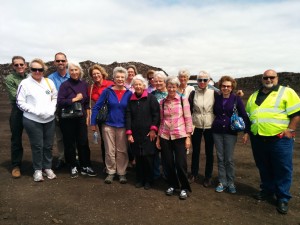Final Approval of Pedestrian and Bike Master Plan: November 3
Road diets, designated routes to school, bike lanes, and the crosswalk at Wildwood Avenue and Grand Avenue will be considered.
The Piedmont Pedestrian and Bicycle Master Plan will be considered by the Council on Monday, November 3, 2014 at 7:30 p.m. in the Council Chambers in Piedmont City Hall, 120 Vista Avenue.
One of Piedmont’s most comprehensive community based planning projects has resulted in an extensive Piedmont Pedestrian and Bicycle Master Plan (PBMP). Funding for the plan has come from an Alameda County Transportation Commission (CTC;www.alamedactc.org) grant and through the City’s existing funds for pedestrian and bicycle improvements (pass-through Measure B funds), also distributed by the Alameda CTC.
Great interest and participation by Piedmont’s many walkers, bikers, teachers, students, and residents have brought concerns and issues to the discussion.
On August 20, the Piedmont School Board was presented with the plan by planning consultant, Niko Letunic and Director of Planning Kate Black. Board President Andrea Swenson told the presenters that the School District would wait until the City completed their projects to improve sidewalk and street safety before further encouraging families to walk and bike to school.
At their October 13, 2014 meeting, the Piedmont Planning Commission considered the final draft plan. Based on discussions at the meeting, the Commission recommended the Council approve the plan with specific additions and amendments.
Will “Road Diets” solve a perceived problem in Piedmont?
Road diets:
The second paragraph on page 79 was amended to read: “While the PBMP includes general concept drawings for road diets (on pages 79 and 81), detailed design and traffic engineering drawings will need to be made before the projects are implemented, and shall be reviewed by the Planning Commission and Bicycle Pedestrian Advisory Committee. The design for Highland Avenue could consider the possibility of landscaped islands and it will need to ensure the turn lane accommodates left-turning AC Transit buses at Oakland Avenue.”
Planned road diets would eliminate two lanes of through traffic on both Highland and Grand Avenues. On Grand Avenue, increased congestion in the area around the ACE Hardware store with vehicles stacking up and blocking traffic, plus a possible elimination of one or more parking spaces are concerns. On Highland Avenue, the island medians could create problems for large buses making turns and create traffic congestion around the Mulberry driveway entrance. Prior concern was expressed over a median in the middle of Highland Avenue impeding the Fourth of July parade activities and preventing homeowners from turning left to enter their driveways, creating multiple U-turns at the intersections.
According to the Federal Department of Transportation, “Road Diets” became increasingly popular in the 1990’s, “with installations occurring in both rural and urban states such as Iowa and Minnesota. A classic road diet typically involves converting an existing four-lane, undivided roadway segment to a three-lane segment consisting of two through lanes and a center, two-way left-turn lane.”
Hazardous crosswalk at Wildwood and Grand Avenues:
Last paragraph on page 101 be amended to read: “Coordinate with Oakland staff on the funding, planning, design and implementation of bikeways connecting the two cities, and other roadway improvements of importance to both cities, including the intersection of Wildwood and Grand Avenues.”
Repeatedly mentioned in prior hearings, the crosswalk at Wildwood and Grand Avenues is long, hazardous creating pedestrian difficulties. The crosswalk is actually in Oakland and consequently Piedmont does not have control of the design. The new language requires Piedmont to work with Oakland to improve the crosswalks.
At the November 3 meeting –
The City’s consultant will make a presentation to the Council on the development process of the plan and the contents of the Draft PBMP, and will be available for questions. Members of the public are welcome to speak at the meeting. The City Council may choose to adopt the Draft Initial Study/Negative Declaration and October 13 version of the Draft PBMP, or may wish to make further modifications.
As with other Master Plans, if conditions change, adjustments can be made to meet changing needs and funding sources.
Read the staff report to the City Council.
Hard copies of the Draft Plan and draft CEQA Initial Study/Negative Declaration document are available for review between the hours of 8:30 am – 12:00 pm and 1:00 pm – 5:00 pm Monday through Friday at the Public Works counter at City Hall, 120 Vista Avenue, Piedmont, CA 94611
The Draft Plan and Draft of the CEQA document can also be accessed at the following links:
Draft Piedmont Pedestrian and Bicycle Master Plan dated October 13, 2014
Draft of the CEQA Initial Study/Negative Declaration
You are invited to attend the City Council meeting and express your opinion. You may choose to write your opinion and address your comment to the entire Piedmont City Council, c/o City Clerk, 120 Vista Avenue, Piedmont, CA 94611 or send an e-mail to jtulloch@ci.piedmont.ca.us. All comments submitted will become part of the public record and may be posted to the City’s web site.
To watch the public hearing on KCOM, cable channel 27. Alternatively, if you want to watch the meeting live or later after the meeting, you can do so by logging on to the City’s website at www.ci.piedmont.ca.us: on the right hand side of the homepage under the “KCOM” heading, click on the “On-line Video” link, then scroll down under the “Sections on this Page” heading, click on the “City Council” link, then on the “October 13, 2014″ link, and click on the “Video” or “In Progress” link and start watching!
Planning staff contacts:
Janet Chang, Assistant Planner, 510-420-3094 janetchang@ci.piedmont.ca.us
Kate Black, Director of Planning, 510-420-3063 kblack@ci.piedmont.ca.us



